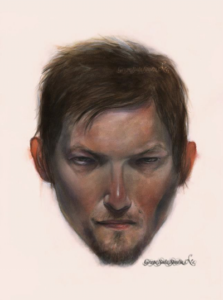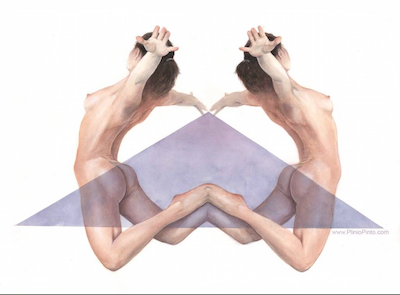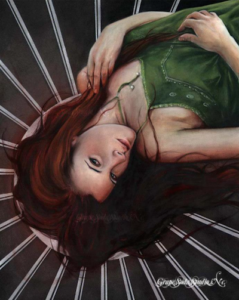Featured Artist: Plinio Pinto
Watercolor artist, Plinio Pinto is one of the most skilled watercolor artists I’ve ever met. He has a unique style. His watercolor paintings have an oil painting-like quality to them. The layers of color are so clean and the detail is so precise, it’s breathtaking.
I owe a lot of my success as an artist to Plino. After a 10-year hiatus from art, I took a watercolor painting class with Plinio and Full Sail Department Chair and artist, Holly Tharp. After seeing his work and taking the class, I became smitten with watercolor and it has since become my favorite medium. I’ve gone from not painting at all to painting daily. Thank you for that inspiration, Plinio!
Take some time to check out this work – it is truly amazing!
Links:
http://gsss.bigcartel.com/products
http://pliniopinto.com/commission.html
https://pliniopinto.carbonmade.com/about
https://www.facebook.com/TheArtofPlinioPinto/
https://www.instagram.com/pliniopinto_art/
1. Tell us about your journey as an artist.
I really feel that we all have the ability to draw or to create art. Some of us just set that aside once we either find another path to express ourselves or are pushed away by some unplanned reason. I’ve been drawing since I can remember, but my professional journey as an artist started right after High School, in the country I was born, Brazil. For a few years after graduating, I worked at an Advertising company, in the production and creative departments. It gave me a great sense of responsibility. After exploring the design career for a little while, I realized that I wanted more out of it, and Illustration was a better path for me. At age 21 I moved to the U.S. to attend Ringling School of Art and Design, in Sarasota, Florida. There, I really developed my skills as a young artist. After receiving my BFA in 2002, I pursued the freelance illustrator route, and worked part time as a faux finisher and mural painter.
Fast forward to 2011, now living in Orlando, I started tutoring artists, young and already established, from my studio, which led to being noticed as a potential educator at Full Sail. Soon after that, I received an invitation to join Full Sail University, as an Associate Course director for the Computer Animation and Game Art Fine Arts department, where I currently work.
Outside my passion for teaching fine arts my subject matter passion is portrait work. I actively do commissions, freelance commercial art and gallery shows.
2. You create some of the most amazing watercolor portraits and figure paintings I’ve ever seen. Tell us a little about your process and how you execute your signature style.
I fell in love with watercolors once I figured out that I could pace myself and slowly build layers of colors. Mixing colors was always a challenge for me, and the ability to focus on subtle changes, weather skin tones, fabrics or background, allows me to get where I need to go at my own pace, without the concern of going too far and then having to back paddle. Once I figured that out, the process of actually putting paint on paper is second nature. The key is to make sure the subject matter has a meaning or connect in some level to what I feel like painting at the time. Most of my work is portraiture and figure work, so having a solid reference and a good a drawing is the first and more important step. After that, I start by adding the lightest hues to the paper, covering the entire work area. At this point, I work wet-on-wet, making sure there enough water everywhere, even in areas that are going to get a lot darker – like the background, for example. I will work wet-on-wet until I feel like I have the form well defined. With every layer after that, I’ll get darker in value and work smaller and slower, focusing on the details. This is a much slower process and I make sure that each layer is bone dry, before adding a new one. Lastly, I’ll add the highlights, where I will “lift” the paint, where necessary, using clean water and a brush. If needed, I’ll use Tinted Gesso for any extra bright highlights.

3. You’ve had some great opportunities featuring your work at Comic Con, for the Walking Dead, and more. How did these opportunities come to fruition? And what goals do you have for the future?
My background is commercial art – I have a BFA with emphasis on Illustration – and I still do freelance illustration, although it is not my main focus right now. At this point in my career, I’m lucky to be able to pick some fun jobs, such as The Walking Dead trading cards, The Hobbit trading cards and DC Comics Bombshells trading cards. These are very popular licenses and it is a pleasure to create work for them. Basically, I initially sent the company printing the trading cards my portfolio- Cryptozoic Entertainment – and now when new projects come up, the art director contacts me with the information. In the future, I would love to travel more and do more conventions such as MegaCon and ComicCon. I love doing pop art, but again my true passion is traditional portrait work and figure painting. My goal is to become an internationally recognized portrait artist.
4. Which watercolor artists inspire you most and why?
I see so much great work on Social Media lately, but I still go back to the classical paintings for inspiration, which are mostly oils. It is interesting that I’m more attracted to oil paintings than watercolors. The Watercolor Artists that I admire currently are Joseph Zbukvic and Alvaro Castagnet. Akira Beard does amazing work on Yupo paper. The illustrative work of Jack Unruh and Joe Ciardelo opened my eyes to watercolor and are still my favorite illustrators
5. What five things can you not live without when you are painting?
Jazz on Pandora, although some times silence is imperative, rolls and rolls of paper towels, my field easel, Winsor & Newton Payne’s Gray and Naples Yellow.
6. What advice do you have for artists who are looking to improve their work?
In order to improve in any way, you have to be willing to try something new, being that a new technique, subject matter or medium. Also, not being concerned about failing if that new thing is not working at first. If you have found the medium and subject matter that you love working with, then practice, practice and practice – but be your hardest critic; if you’re not happy with it, start over!



